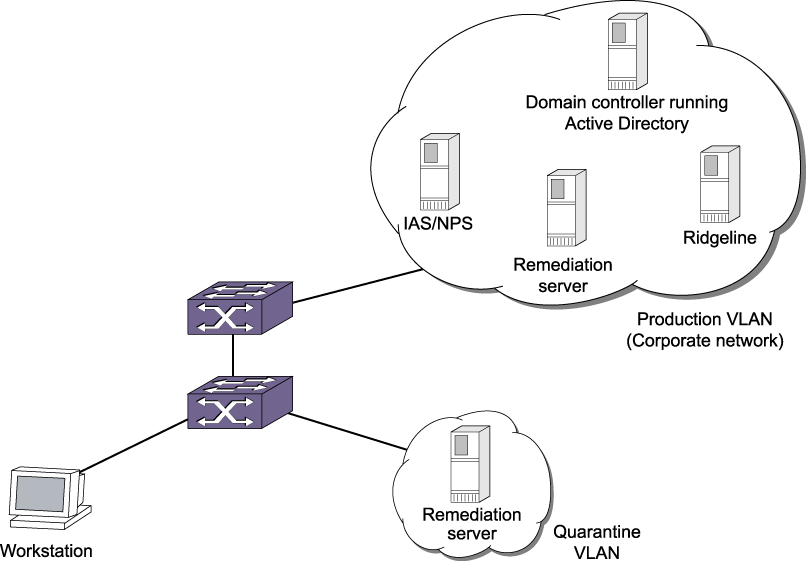802.1X authentication in combination with Microsoft‘s Network Access Protection (NAP) provide additional integrity checks for end users and supplicants that attempt to access the network.
NAP allows network administrators to create system health policies to ensure supplicants that access or communicate with the network meet administrator-defined system health requirements. For example, if a supplicant has the appropriate software updates or anti-virus software installed, the supplicant is deemed healthy and granted network access. On the other hand, if a supplicant does not have the appropriate software updates or anti-virus software installed, the supplicant is deemed unhealthy and is placed in a quarantine VLAN (Virtual LAN) until the appropriate update or anti-virus software is installed. After the supplicant is healthy, it is granted network access. For more information about NAP, please refer to the documentation that came with your Microsoft Windows or Microsoft Server software.
In addition to the required hardware and software, you must configure NAP-specific VSAs on your RADIUS server. By configuring these VSAs, you ensure supplicant authentication and authorization to the network and the switch creates dynamic Access Control Lists (ACLs) to move unhealthy supplicants to the quarantine VLAN for remediation. For more information see, Using NAP-Specific VSAs to Authenticate 802.1X Supplicants.
Sample Network Using NAP to Provide Enhanced Security displays a sample network that uses NAP to protect the network.


 Print
this page
Print
this page Email this topic
Email this topic Feedback
Feedback